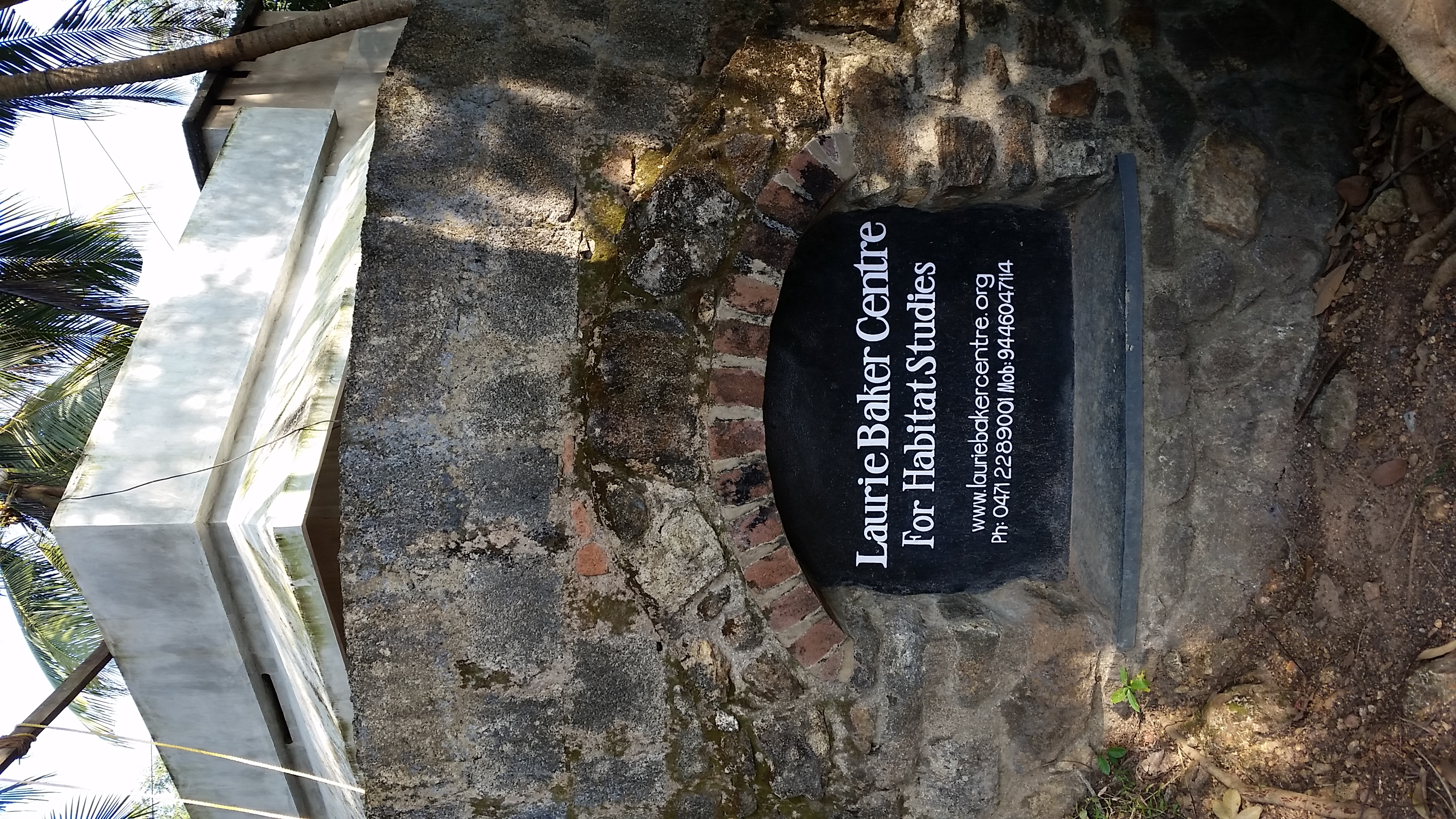12/31/2017 Third Day
R. D. Padmakumar delivered an enlightening general overview of Laurie Baker’s philosophies. Laurie Baker’s approach can be summarized through the question, “Ask of each building component: Is it necessary?”. While this question creates a moment of pause for considerations and the filtering of unnecessary materials, the fine line that distinguishes what is necessary and what is essential is difficult to draw. Further philosophical exploration is possible with Plato’s forms The discussion between the essential and necessity has implications for aesthetics features of architecture. While these aesthetic flourishes are often viewed as superfluous, they hold great significance in expressing the values and identities of peoples and cultures and contribute to the construction of communities and society, at large. When buildings are an expression of the local, laborers transform from manual machines to artistic artisans. Through this transformation, when people function more as humans instead of machines, social sustainability is achieved. More specifically, people are employed in the production of art and culture, something unmeasurable in just pure conventional terms, like GDP. Padmakumar also revealed Laurie Baker’s Quaker heritage in seeking direct unity with the Creator and belief in the ultimate final judgment of truth before the Creator, revealing the foundations of Baker’s honest and sincere endeavors in his work of simplifying and utilizing architecture to improve the welfare of the masses. Baker is a man of his words, practicing what he preaches. As such, one should first change their behaviors, be the change they want to see in society, and practice what they preach, like Baker, to affect greater societal change.Bottom-up social change versus top-down social change
P. B. Sajan presented on sustainable building technologies and materials. Without a background in architecture or engineering, I cannot fully appreciate the various technologies, methods, and practices employed. However, I was able to understand their significance when brought on tour of the constructed projects to see theory in practice and when conventional means and materials are explained alongside the new ones being advocated.
Later in the afternoon, a visit to the Center for Development Studies, the first project constructed by Costford from their principles, did reveal the tangible benefits of what they promoted.
01/01/2018 Fourth Day
Historical overview of people movements in Kerala. It was fortunate for Kerala that under the Travancore monarchy, the ruling power was considerate of the need of the masses by abolishing slavery and establishing free schools. These free schools initiated a consciousness among the people, especially from the lower castes, and opened society to awareness outside their region. Leading figure heads from the lower classes led movements: one, to allow upper garments for all peoples and two, to integrate the schooling of all castes. The rise and election of the Communist Party in Kerala resulted amidst the socially revolutionary atmosphere of the previous reformers. Is Kerala the Oregon or Vermont of India? Educating people and changing their mindset, disregarding the pressures of upcoming elections, has the long-term social consequences as seen in the continuation of social movements after the passing of social revolutionaries. When social change arises from the bottom, it is more sustainable because the people continue to embody and advance those ideals.
A. Kasturi Rangan summarized and condensed the broad topics of housing and urban planning in India. Very briefly, in India, housing is a right of all households and the government aims to serve as a facilitator for the construction of housing instead of the provider. The balance is between affordable and adequate housing. Previous government schemes have resulted in affordable housing, but they are not necessarily adequate for those who reside in the constructions. Exploration of what is adequate and whether it can be affordable It was interesting to learn that housing affordability for the “Economically Weaker Sections” is 30-40% of monthly household income, while for low income groups housing affordability is house price to annual income less than 5 to 1. In the Indian context, the construction of housing units is determined by the cost of materials, labor, technology, and management organization. It is similar in the US. While India may initially benefit from the standardization of building components, if they are not experienced already, I am fearful that mindless attempts would result in the continuation of American suburbanization. Many questions arose from such a broad overview and introduction
[comment]: <> 